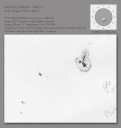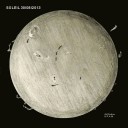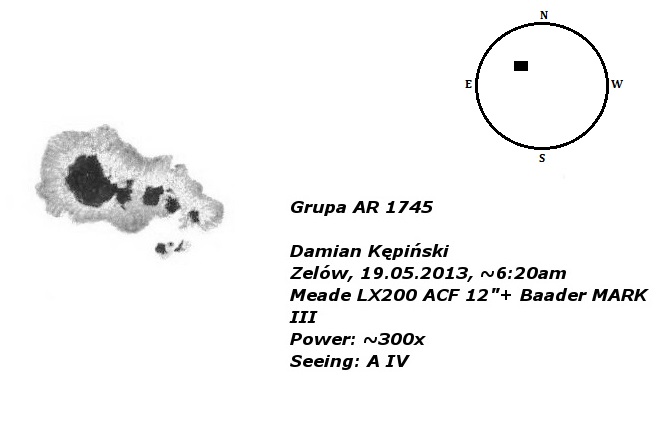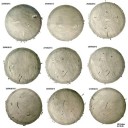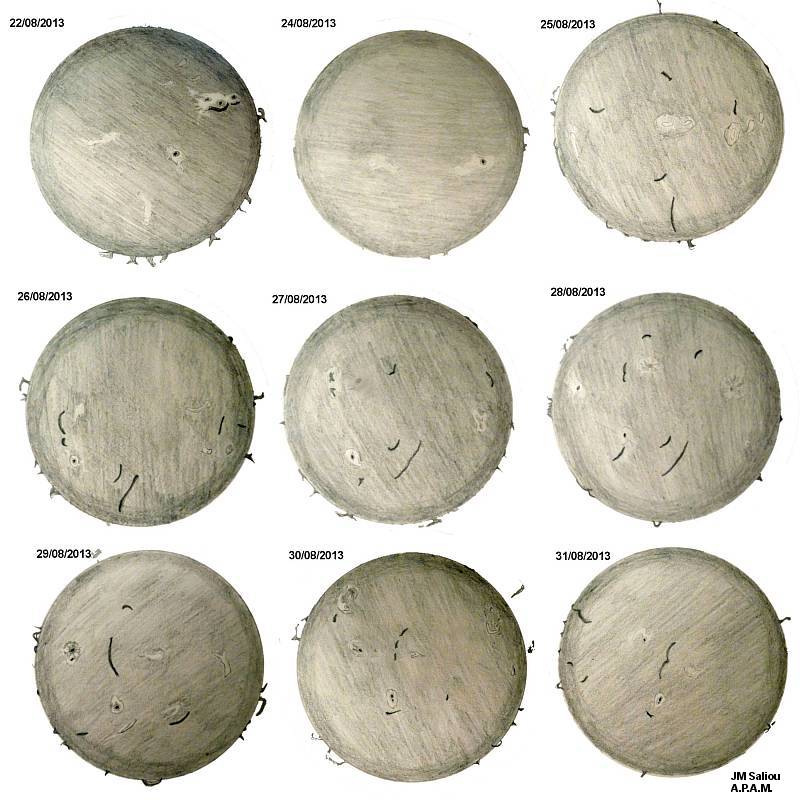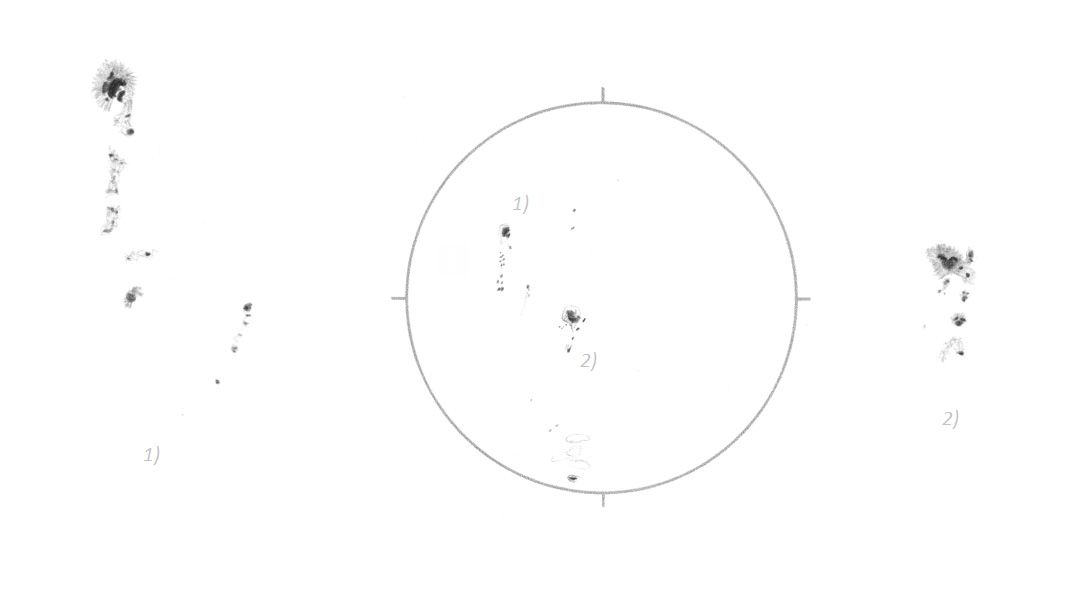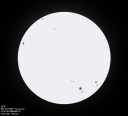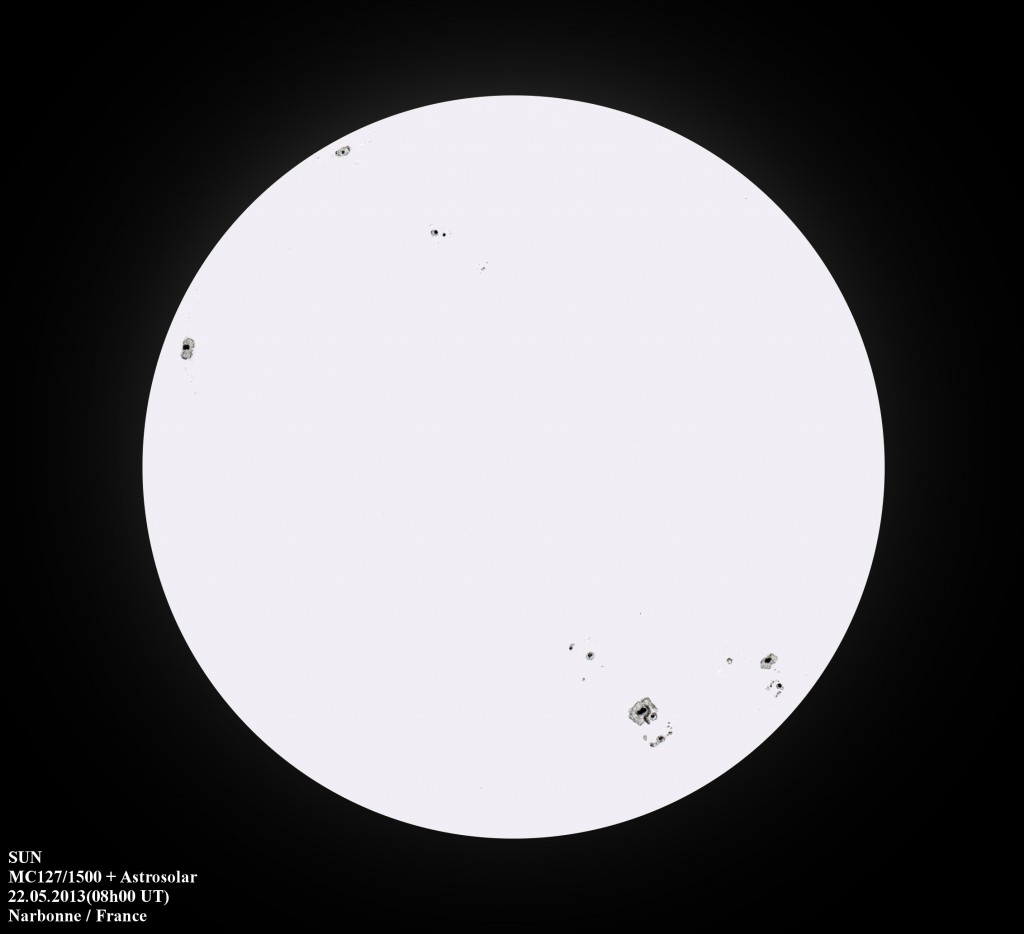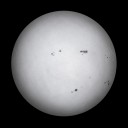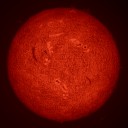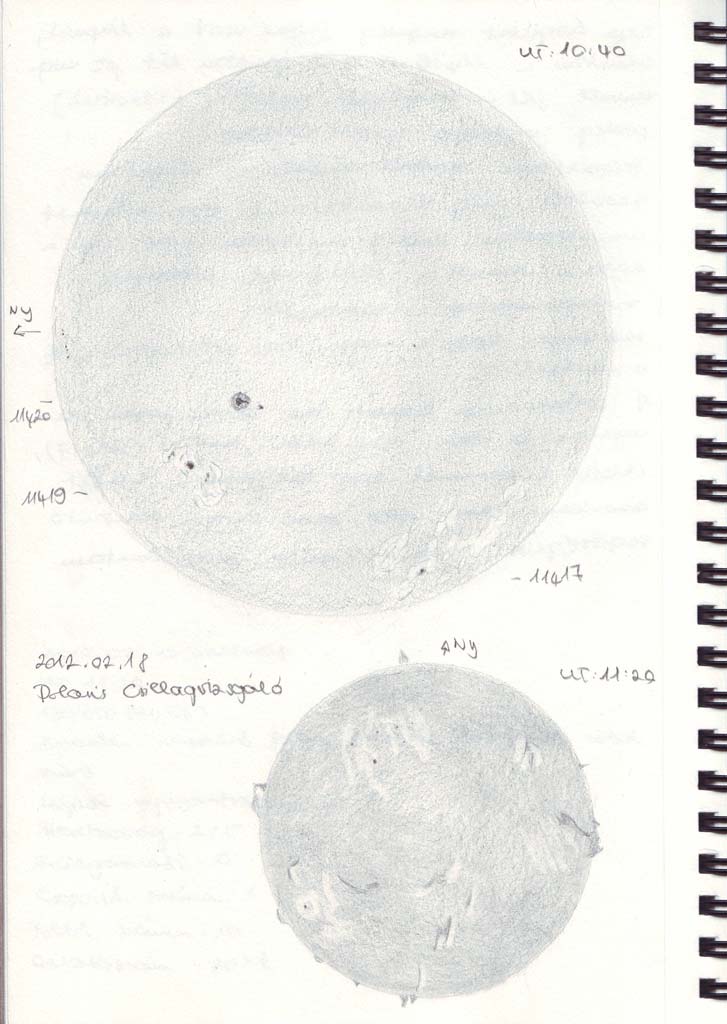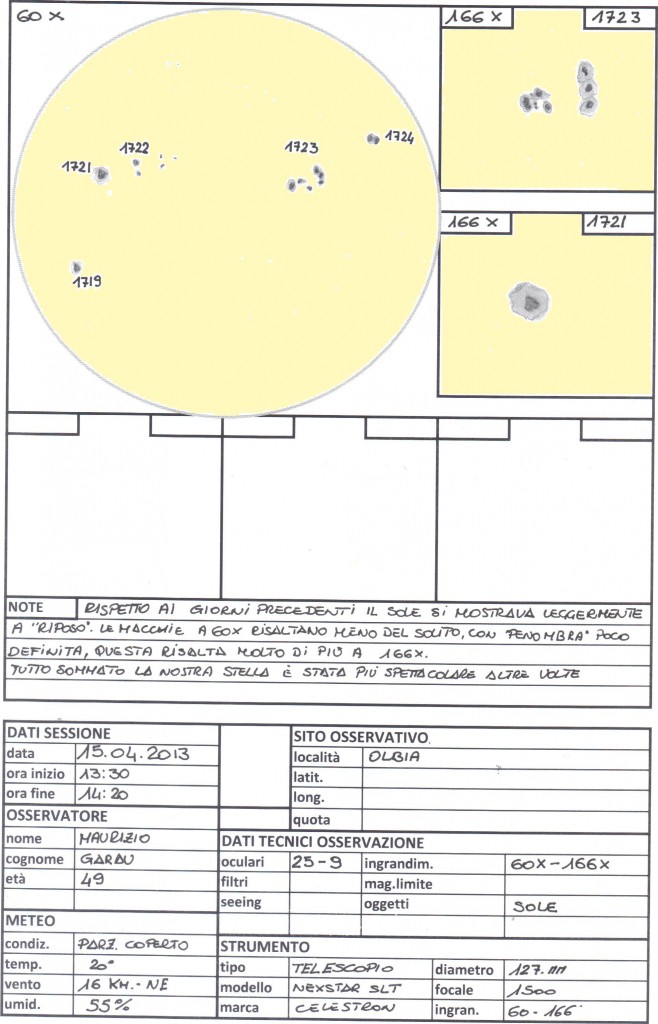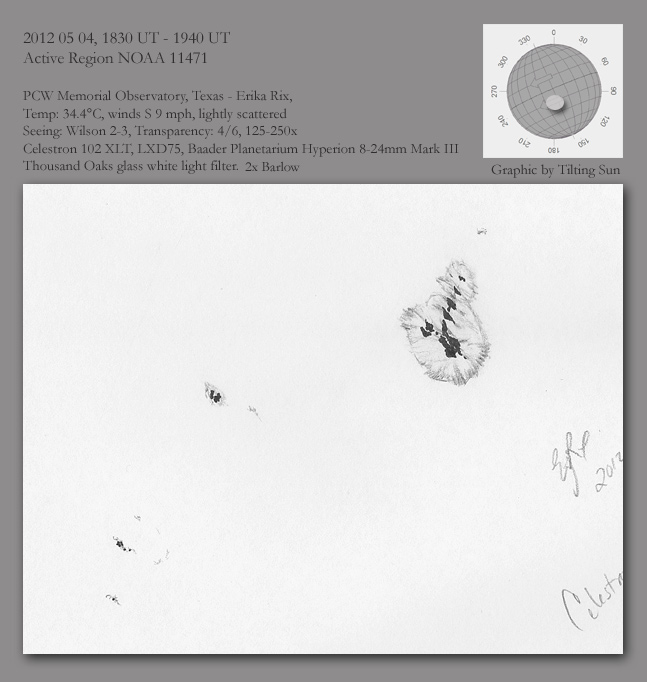
2012 05 04, 1830 UT – 1940 UT
Active Region NOAA 11471
PCW Memorial Observatory, Texas – Erika Rix (www.pcwobservatory.com)
Temp: 34.4°C, winds S 9 mph, lightly scattered
Seeing: Wilson 2-3, Transparency: 4/6, 125-250x
Celestron 102 XLT, LXD75, Baader Planetarium Hyperion 8-24mm Mark III
2x Barlow, Thousand Oaks glass white light filter.
Sketch created scope-side with white card stock, felt-tipped black artist pen, #2 graphite pencil.
Faculae were present in several areas around the limb, particularly around ARs 1473, 1469, 1474, 1475 and north of 1473 ~45 degrees. Sunspots were observed in all five active regions with 1474 ad 1475 only showing one per region. Seeing was poor and it was windy. I had to wait several moments to catch sharp views so may have missed out on pores in those areas. There were a few sunspots in the two active regions near the western limb, 1473 and 1469.
Active region 1471 was the area I concentrated for today’s sketch. The larger sunspot grouping was in the eastern region of that AR with very defined edges to the penumbrae and radial structure reaching to the umbrae. It was painstaking to wait for the winds to drop and seeing to settle to grab as much detail as I could. I dropped magnification and then increased when sky conditions permitted. That group appeared to have a chain of smaller sunspots, all sporting both umbrae and penumbrae leading east from the larger cluster of sunspots. A very faint speckled area was a further few degrees beyond the chain. I couldn’t make out if they were pores or simply penumbral blotches.
Moving to the western area of the AR ~10-20 degrees showed three more small groupings in that active region. The middle two of the AR had both umbra and penumbra and faint areas that looked penumbral to the south of them. The furthest grouping to the west was too soft and faint to be sure of its structure.
